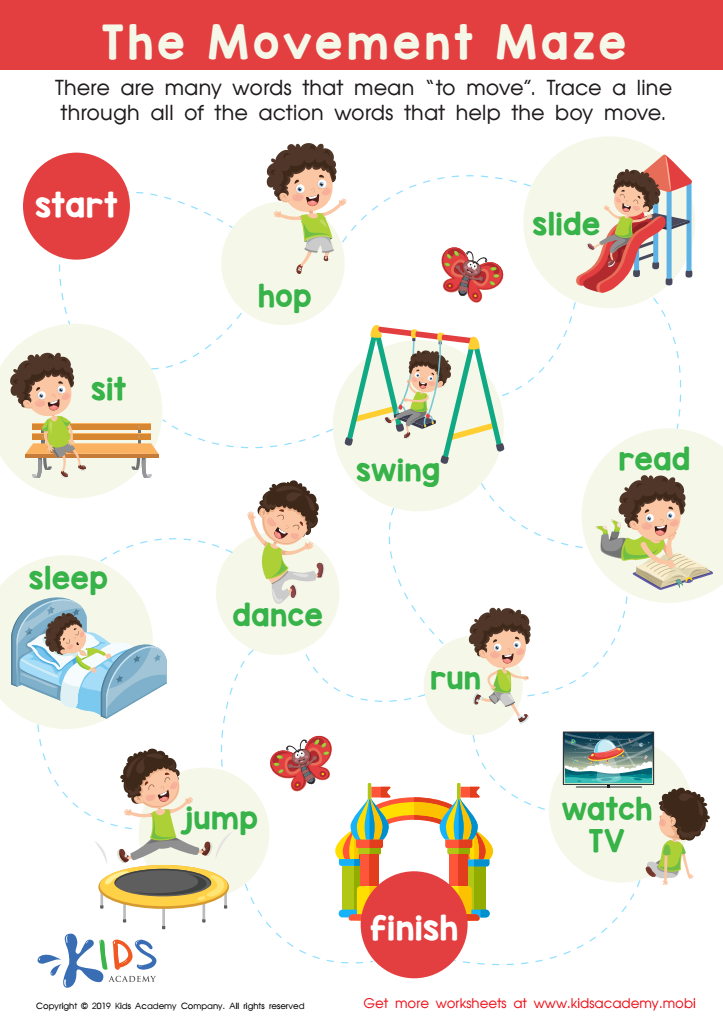Spatial awareness Normal Reading Worksheets for Ages 4-9
3 filtered results
-
From - To
Enhance your child's learning journey with our "Spatial Awareness Normal Reading Worksheets" designed for ages 4-9. These interactive worksheets promote a solid understanding of spatial relationships, essential for early literacy and cognitive development. Through engaging activities, children will learn to recognize positions, directions, and patterns, boosting their reading comprehension and problem-solving skills. Our worksheets are colorful, fun, and age-appropriate, making learning enjoyable. Whether at home or in the classroom, these resources are perfect for supporting your child’s growth in spatial awareness while fostering a love for reading. Download them today and unlock your child's full potential!


Where Is the Ant? Worksheet


The Movement Maze Worksheet


Fairy Tales Maze Worksheet
Spatial awareness refers to the ability to understand and interact with the world around us in three-dimensional space. For children aged 4-9, developing spatial skills is crucial for several reasons. Firstly, strong spatial awareness skills enhance problem-solving abilities. Children learn to navigate environments, manipulate objects, and visualize problems, which serves as a foundation for advanced mathematical concepts like geometry.
Secondly, spatial awareness is linked to physical coordination. Activities that require children to understand their position relative to others help develop gross and fine motor skills. Engaging in spatial games—like puzzles, building blocks, or outdoor activities—benefits physical health and cognitive development.
Additionally, spatial awareness influences cognitive development, particularly in reading and writing. As children navigate letters and words on a page, they rely on their spatial understanding to grasp concepts like directionality and sequencing. Strong spatial skills can enhance their overall learning, fostering confidence and interest in academic pursuits.
Lastly, nurturing spatial awareness can aid in social interactions. Children learn to negotiate space when playing with peers, leading to better cooperation and social skills. Understanding spatial reasoning creates a more well-rounded educational experience and ensures children are better prepared for future academic challenges.
 Assign to My Students
Assign to My Students



















